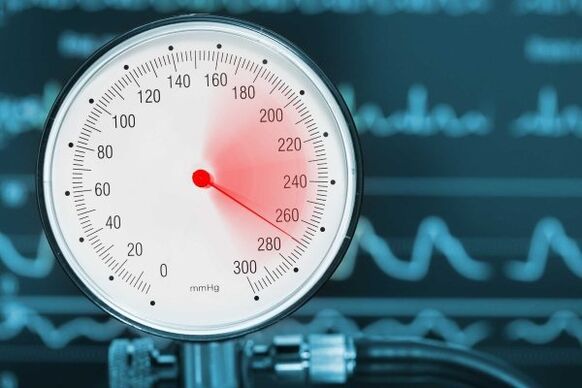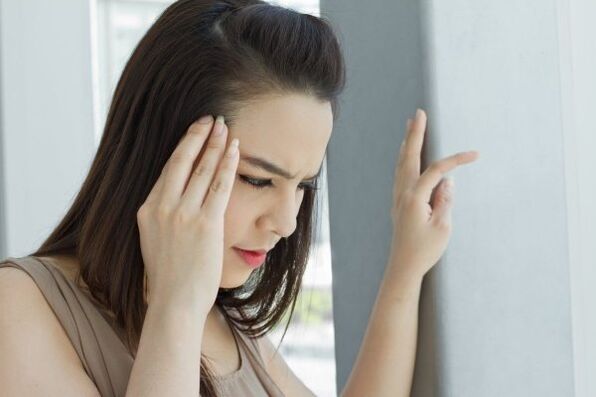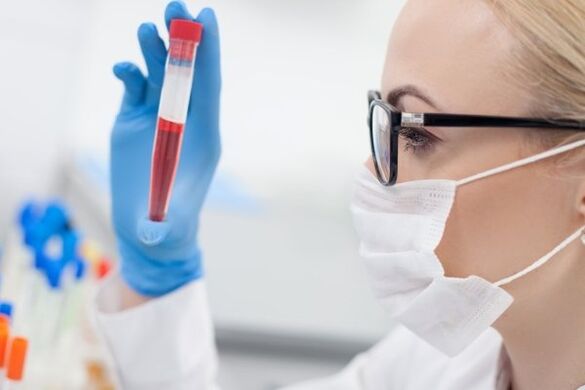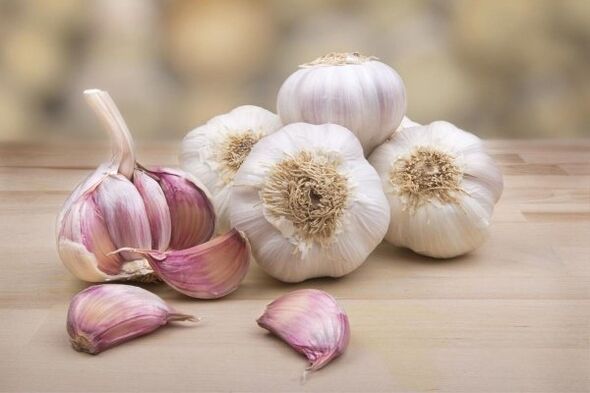Hypertension is a disease associated with a periodic or constant increase in blood pressure (blood pressure).For some people, an increased pressure is the norm, but this is an exception to the rules, and the indicators mentioned for most people are pathological.
The causes and the mechanism of the development of high blood pressure
In a healthy person, the pressure is normal about 120/80 mm ed. Art.At the physiological and chemical level, an increasing pressure is a natural reaction of the body at risk or stress.In a critical situation, adrenaline is thrown into the blood, the heart begins to work faster, the vessels narrow, the muscles move and the pressure increases.

Regular stress, experiences, lack of sleep, problems - all of this can lead to a chronic pressure increase.However, doctors also call other causes of high blood pressure: inheritance, overweight or obesity, disorders in the thyroid gland, kidneys, magnesium deficiency in the body that take some medication.
The pathogenesis The high blood pressure is not fully clarified.The hemodynamic basis for increasing blood pressure is an increased arterial tone due to nervous impulses that come from the central nervous system along the likeable paths.
In addition to the neurogenic mechanism, other mechanisms that increase blood pressure, in particular humorally, can be switched on (one after the other) humorally.
The kidney factor associated with acute ischemia is also important.The inclusion of the kidney factor contributes to the development of a high and stable blood pressure.The well -known role in the complex pathogenetic mechanism The high blood pressure is played by hormones of the cortical layer of the adrenal glands.
Thus, two groups of factors in mechanism can be distinguished to increase blood pressure in hypertension: neurogen, which through the sympathetic nervous system a direct influence on the tone of arterioles and humoral, combined with the increased secretion of catecholamines and some other biologically active substances that cause pressure.
The development mechanism of high blood pressure is complicated.Many organs and systems are involved.The degree of damage to different organs for high blood pressure can be unequal, so several clinical and anatomical variants are distinguished the high blood pressure: with a predominant damage to the vessels of the kidneys, the heart and brain.
Symptoms
The arterial pressure is blood pressure, which depends on the constant shocks of the heart that perform its pump function.There are about 70-90 abbreviations per minute.By measuring blood pressure, we take two digits into account: systolic pressure (at the time of the contraction of the heart muscle) and diastolic pressure (at the time of its relaxation).The arterial hypertension is usually referred to as an increase in pressure over 140 by 90.
With increased pressure, a number of such characteristics are usually observed:
- Headache, noise in the ears;
- visual disorders;
- Dizziness;
- Absent medication memory;
- Storage deterioration;
- Sleepiness;
- Instability of blood pressure;
- Brawl;
- Chills;
- Swelling of the eyelids, swing of the face in the morning;
- Heart of heart;
- Shaking frost, sweating, pulsation in the head;
- Reddening of the face, inner tension, fear, irritability;
- Performance acceptance;
- Swelling of the limbs, deafness of the fingers;
- Pain in the heart.
If one of these symptoms is observed from time to time, this is not an indication of increased pressure.However, if you notice the chronic presence of signs, contact a doctor.
The most common sign indicates the disease are headaches.The second most important symptom of increased pressure is problems with visual perception:
- Dangle in the eyes;
- Untreatment of objects;
- Acceptance of peripheral vision;
- Fights of blindness;
- Fog before my eyes;
- Reduction of the reaction to light.

High blood pressure and high blood pressure: What is the difference?
Hypertension is a chronic disease with a longer and persistent hypertension, and high blood pressure is a continued increase in blood pressure (ie not a diagnosis, but the disease of the body).In fact, these terms are one and the same, only the first denotes the name of the disease, and the second - indicates the fact of increasing blood pressure.
Hypertension hypertension is characterized by current characteristics.While high blood pressure is an independent disease, arterial hypertension is a symptom of a pathological state that manifests itself exactly in a continued pressure increase.
To say that this is one and the same, it is only possible with a hypertensive crisis.The crisis itself is characterized by a constant increase in pressure (high blood pressure) and occurs at the same time due to high blood pressure.
High blood pressure stadiums
For doctors for the right diagnosis, it is necessary to determine the stage of high blood pressure in the patient and to make an appropriate recording in his medical card.If the high blood pressure is diagnosed late in the patient, i.e. in the 2nd or 3rd stage, the consequences for the patient's body are more serious than when the treatment of high blood pressure began in the first stage.Nevertheless, only a few patients with high blood pressure in the early stages turn to a doctor or at least regularly measure blood pressure.
The first stage
140-150/90 mm ed. Art.When the arterial pressure fluctuates within these borders, the patient diagnoses the first (light) high blood pressure rate.Hypertonic crises rarely occur, the disease is not slightly.
The second stage
160-170/100-109 mm Hg. Art.- The second (moderate) degree of high blood pressure.Hypertonic crises are typical.The narrowing of the retinal arteries, hypertrophy of the left ventricular is recorded objectively.
The third stage
200-300/129 mm ed. Art.And above.Heavy hypertensive crises often develop (very severe form of high blood pressure).The harmful effect causes hypertensive encephalopathy, a Levo ventricular deficiency, the development of brain vessels, hemorrhoids and edema of the optic nerve, kidney failure and kidney failure.
Why is high blood pressure dangerous?
Doctors argue that the consequences of high blood pressure are threatening for life than AIDS, cancer and tuberculosis.The insidence of this disease is that their symptoms are similar to the signs of ordinary revision.Therefore, about half of the high blood pressure will learn too late about their illness if it is very difficult to treat it, and it is almost impossible to stop the processes of destruction of the body that he has launched.
The risk of high blood pressure is that it begins as a violation of the functions of blood pressure, but will lead to many serious diseases of internal organs and systems, in particular to cardiovascular complaints in the future.A high blood pressure that occurs without medical control can lead to a heart attack, an increase in the heart and heart failure.
The consequences of high blood pressure are particularly dangerous for those who have harmful factors for the murderous effect on the body of increased blood pressure - smoking, drinking alcohol, unhealthy nutrition, sedentary lifestyle, more often stress, high cholesterol in the body and diabetes.Such people increase the risk of heart attack, stroke and kidney failure, blindness and various cognitive disorders - memory reduction, intelligence and performance.

Hypertension is a murderer No. 1 among all cardiovascular diseases.The mortality in the past 25 years has grown from 98 to 107 people per 100,000 people.This is noticeable growth.50% of the patients are treated quite efficiently, but only 10% reach the target level of blood pressure, ie under 130 to 80.
Which doctor is active with treatment?
With increased pressure you should go to a specialist.The therapist carries out a preliminary examination of the patient, carries out the necessary tests and determines which doctor turns further.This characteristic is explained by the fact that the therapist is a specialist in several medical areas at the same time.
After a preliminary inspection, the doctor exhibits a transfer to inspect other specialists:
- Neurologist;
- Cardiologist;
- Nephrologist;
- Okulist;
- Endocrinologist.
Diagnosis
The simplest diagnostic method is the measurement of blood pressure.If there is a stable increase to 140/90 mm Hg.Art.And above this means that there is high blood pressure.
An increased pressure is considered stable at repeated measurements (at least 2-3 times on different days for 4 weeks).
The following diagnostic methods are also used to determine the presence of high blood pressure:
- Urine analysis for protein and glucose;
- on hemoglobin or hematocrit;
- Determination of creatinine level or an increase in nitrogen in the blood and urine;
- Glucose mirror during hunger;
- Electrocardiogram;
- Ultrasound of the heart, kidneys;
- Consultation of an optician with an examination of bloody basic vessels.
Measurement of blood pressure
Measurement of blood pressure with a manual tonometer (Korotkov method):
- The tonometer cuff should be 2 cm above the elbow on the heart level (middle of the chest).A finger should pass between the NEMPLE cuff and hand.The cuff should cover at least 80% of the shoulder scope and at least 40% of its length.
- Place the phonondoscope membrane on the point of pulsation of the shoulder artery.
- Pump the air quickly with a pear into the cuff (don't forget not to close the valve in advance) so that the air does not return to the upper level of pressure, 20 mm ed.exceeded systolic (after the pulse disappears).
- Leave the air slowly from a cuff at a speed of 2 mm hg.Art.In sec.The first blow corresponds to the value of the upper pressure. The sound stop corresponds to the lower pressure.If the tones are very weak, you should lift your hand, bend and straighten them several times and repeat the measurement.
Blood and urine tests
A general blood test or urine test for high blood pressure is not informative.It is impossible to determine the cause of the disease by such indicators, but they help find out the stage of the disease.
From a general blood test, you can get to know the number of shapes and evaluate the presence of inflammatory processes in the body.

Evaluation of the work of the heart
There are various methods for evaluating the work of the heart:
- The physical diagnosis includes the examination of the heart muscle using a phonondoscope.The doctor "hears" in the heart, shows noise, rhythm disorder.Based on the results of physical diagnostics, the EKG is prescribed.
- The EKG (electrocardiogram) is also an evaluation of the work of the heart muscle, only more detailed.Such a study enables you to identify possible changes in time and to completely analyze the work of the heart for a certain period of time.
- Dopplerography is an effective ultrasound examination with which the blood disease is determined by the vessels.
- Arteriography is a radiological method that evaluates the condition of the arterial walls and shows atheromatous plaques, defects of the arteries.
Inspection of the eye floor
Eyes like the heart are viewed as the target organ with high blood pressure.When diagnosing increased pressure, the ifalmologist is examined when diagnosing the pressure.As a rule, the retinal veins and the narrowing of the artery with high blood pressure in the initial phase are expanding.These functional changes are reversible: the blood vessels also return normal when the pressure is normalized.
Organic changes occur in the second stage, the disease worsens.Microanevrisms appear, bleeding can occur.
In the third stage, the condition of the optic nerve changes, the sharpness and the field of vision deteriorate visual functions.
Ultrasonic
The work of the kidneys is evaluated by ultrasound of the kidneys and adrenal glands.Due to the increased pressure in the organs, nephrons die the cells that filter daily blood liter of toxins.In the end, this can lead to kidney failure.
An ultrasound of the kidneys helps to identify volumetric formations in the adjoining greens, severe lesions of the kidney tissue.An ultrasound of the renal arteries is also prescribed.
How do I treat high blood pressure?
Not -drug methods:
- Acceptance of body weight to normal;
- Rejection of smoking;
- Acceptance of alcoholic beverages;
- moderate physical activity (regular walks in the fresh air);
- Reduction of salt consumption;
- an increase in the diet of vegetable foods that are rich in calcium, magnesium and potassium;
- Reduction of the consumption of animal fats.
Healing therapy is prescribed if not -valley methods have no effect or the patient has risk factors for the development of diabetes, hypertensive crisis, kidney damage and coronary atherosclerosis.
Drugs
The development of medication against high blood pressure has been taking for more than a dozen years.But today the problem of developing new, more effective and safer means to reduce and control pressure is still acute from medicine and pharmacology.
Today there is a widest selection of such medicines, but all differ in the type of exposure, efficiency, indications and contraindications.Your costs play an important role.Therefore, the doctor selects an individual scheme of drug treatment of high blood pressure for each patient, which is mainly based on the causes of his occurrence:
- Diuretics.These drugs partially block calcium channels and have a vasodilating effect.They are recommended when there are vascular diseases such as high blood pressure, but the means are contraindicated for people who have passed myocardial infarction.
- ACE inhibitors (Angiotinzinocrofing -Ezym).Reduce the production of an enzyme that stimulates a decrease in the elasticity of blood vessels.They are very effective, well tolerated by patients with high blood pressure and have a positive effect on the cardiovascular system.They are often recommended after a myocardial infarction and with increased pressure against the background of diabetes.
- Beta-adrenosaer.Reduce the heart rate and reduce your strength.They have a variety of applications and are recommended for angina pectoris, tachycardia, after a heart attack against the background of heart failure.
- Medicines to reduce emergency pressure.This includes the extract of the mother word, Valerian, peony root.
diet
Baked potatoes are a special product for high blood pressure.This product is rich in potassium-das most important trace element that regulates the water salt metabolism in the body.
The main nutritional elements for high blood pressure are potassium, calcium and magnesium.These are these trace elements that contribute strongly to a decrease in blood pressure.
The diet for high blood pressure implies the rejection of FAST -FOOD products that are normally overloaded with sodium and helps to increase the pressure.In addition, the diet should be saturated with products, also rich in calcium and magnesium:
- Grain - bread, rice, wheat from solid varieties;
- dried fruit and sheet metal vegetables;
- low -fat meat and poultry;
- low -fat dairy products;
- Nuts and legumes.
Enjoy with great caution for fatty foods and sweets.
The doctors claim that compliance with a diet helps to maintain the pressure within the normal limits, thereby reducing the risk of strokes by almost 40%and heart attacks by 30%.
Life
All patients with blood pressure indicators are higher than 120-130 to 80-64 mm ed. Art.You urgently need to change the familiar lifestyle and nutrition for you.This is to limit smoking and drinking alcohol, the proper compilation of a complete diet and physical exercises.
A healthy lifestyle for high blood pressure, as with any chronic illness, is one of the main factors for effective treatment.Therefore, changes are regarded as a critical step in the treatment process and as a prevention of arterial hypertension.
Folk remedy
Most patients with high blood pressure occupy special medication, but they can also combat the disease with the help of well -known folk remedies.Consider some effective recipes:
- Flax seeds.They contain a large amount of fatty acids from the Omega-3 group.They contribute to an increase in lipoproteins with increased blood density, which is preventing the increase in cholesterol levels and the formation of atherosclerotic complications on the walls of blood vessels.The body cannot synthesize this substance itself, so it is important that it goes hand in hand with food.In flat seeds, the amount of omega-3 is 25% of the weight plus relatively inexpensive and well absorbed.Take linen seeds of 3 tablespoons per day in a chopped shape.
- Tincture of red pine cones.Helps normalize blood pressure and adaptation of the post office.The tincture is prepared as follows:
- Collect raw materials in the summer months, rinse under running water and pour into a liter of liters.
- Pour vodka or 40-degree alcohol and then give a dark place;
- exist for 2-3 weeks at room temperature;
- Before you take with you, burden gauze.
- Correctly prepared tincture should be dark red.Take a teaspoon 3 times a day before eating for half an hour.You can mix with water or tea.
- Garlic.If you take the garlic regularly, this stimulates the blood flow in the vessels and prevents the deposition on your walls with oxidative breakdown.Close -Eyed mixing properties of garlic help to prevent blood clots.The constant use of cloves of garlic helps to reduce blood pressure by 7-8%.
- Two garlic teeth are chopped thinly and pour a glass of boiled water.
- Let it brew for 12 hours;
- In the morning they drink and prepare a new infusion.
- The course is a month.Take a glass twice a day.
- Lemon with cranberries and honey.Give the lemon and mix the spoon with a spoonful of cranberries.Add half a tablespoon of a ground fresh rose hip, a glass of honey and take a tablespoon of the product in the morning and evening.
- Wegerich.Take 4 tablespoons of shredded cooking banana leaves.Pour a glass of vodka and let the composition brew in a dark place for two weeks.Strain the mixture and use 30 drops three times a day.

You can also cook the garlic infusion:
forecast
The forecast for high blood pressure in the sense of absolute recovery is usually unfavorable.Only in the transistor stage can the further development of the disease possible.With modern treatment methods, however, you can slow down the progression of the disease, prevent the development of complications, relieve the condition of the patients and to maintain their ability to work for a long time.
The forecast for the kidney variant of the course is very unfavorable, especially when renal arteriolosclerosis develops.The forecast is deteriorated by the accession of atherosclerosis at every stage.
Prevention measures for high blood pressure
The prevention of high blood pressure is primarily divided.Primary prevention needs healthy - those whose pressure does not yet exceed the normal numbers.The following complex of the healing measures not only helps for many years to keep the pressure normal, but also to remove overweight and to improve overall -to be: leg:
- Low -salt diet;
- Restriction of animal fats;
- Exercise;
- Psychological unloading;
- Rejection of bad habits;
- Weight control.
Secondary measures aim to maintain blood pressure within the norm in hypertensive patients, the exclusion of hypertensive crises and the preventing complications of the disease.Secondary prevention-related psychological training, which contribute to moral and emotional unloading, physiotherapy methods, treatment in sanatoriums, the use of sedatives that improve sleep, the use of traditional medicine (Hawthorn, peonies, Valerians, motherwort) and the daily control of pressure indicators.
If you pay attention to high blood pressure in good time and start treatment, you can avoid serious consequences.Problems with pressure are not only solved by drugs, but due to a healthy and correct lifestyle and the control of their health to a greater extent.
























